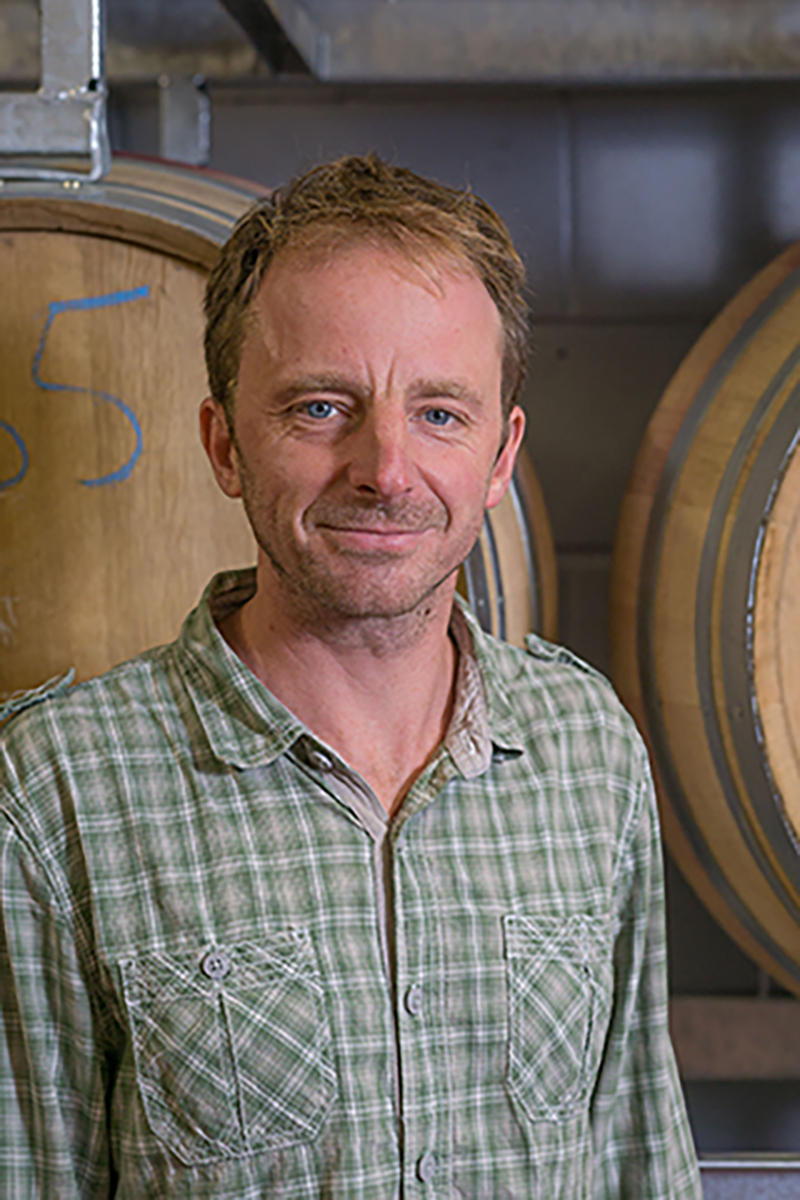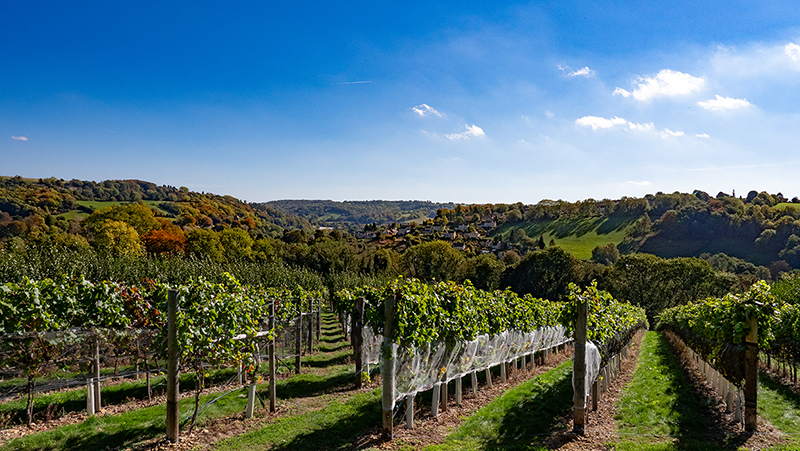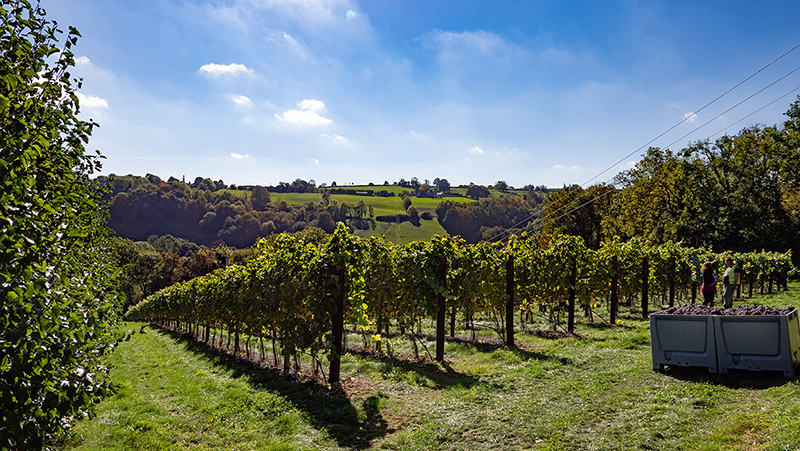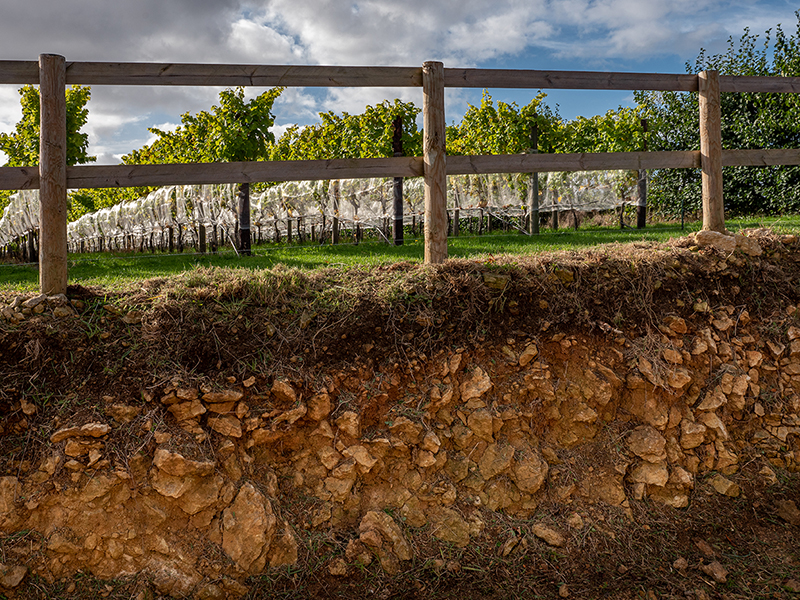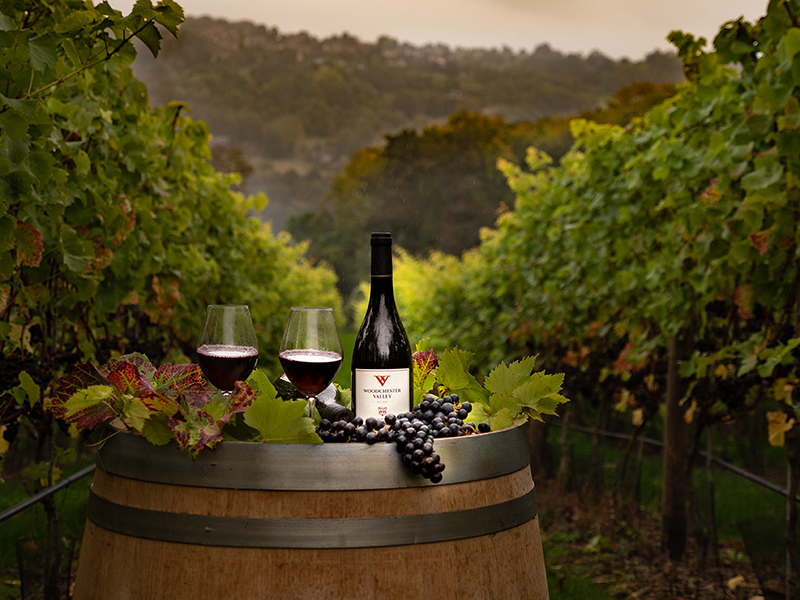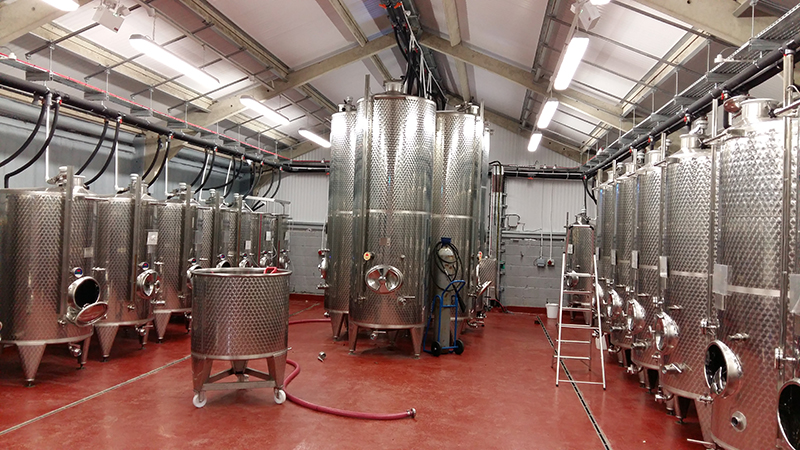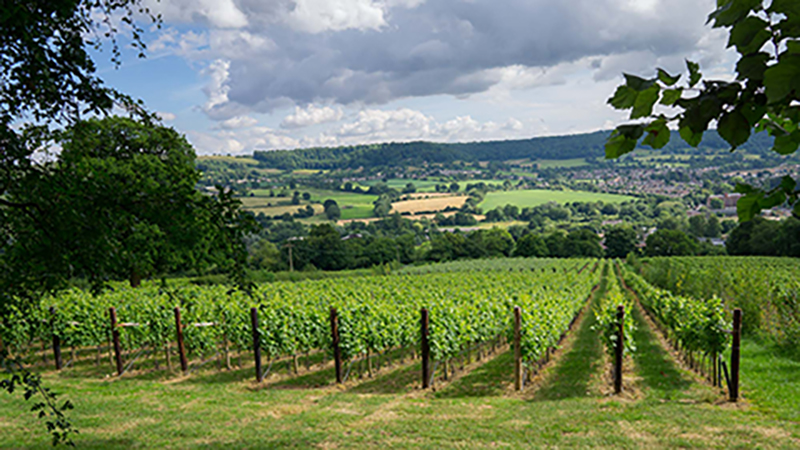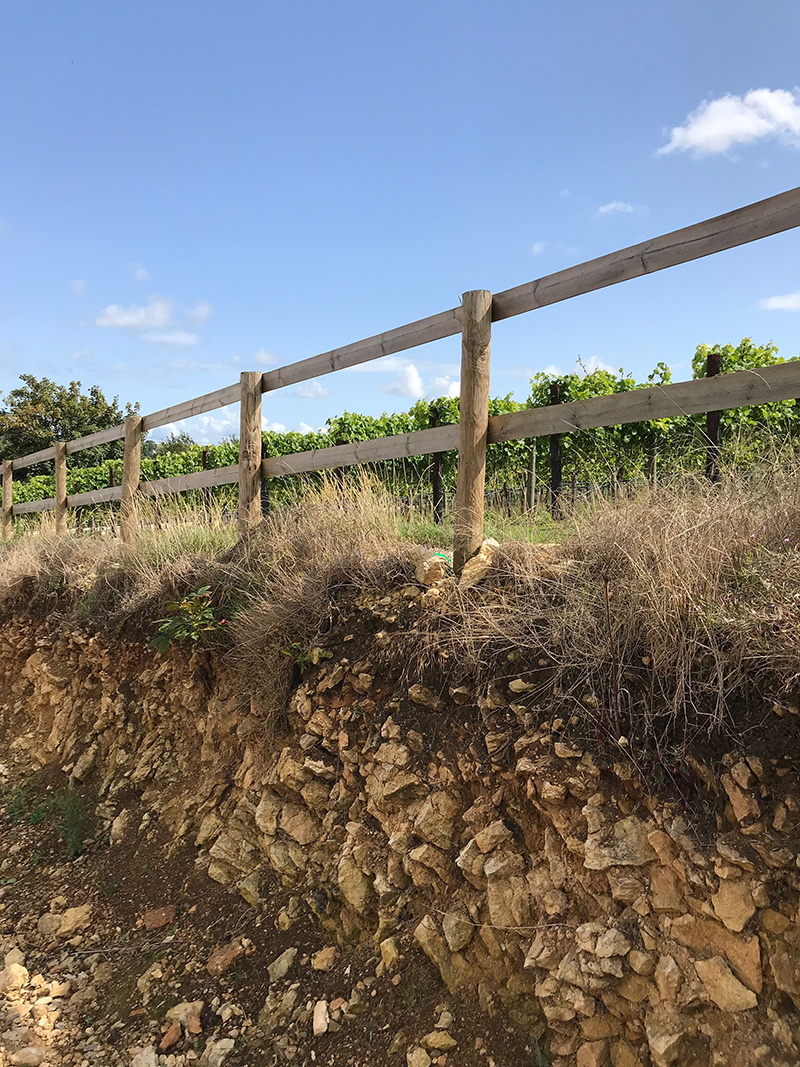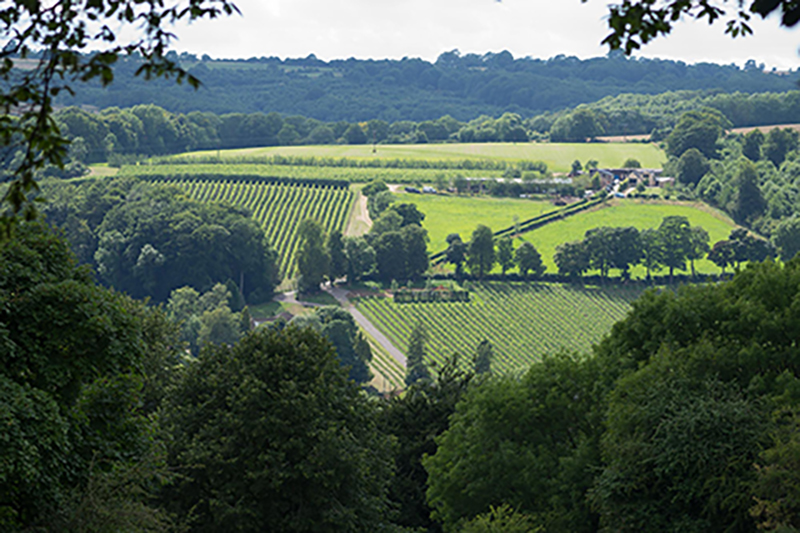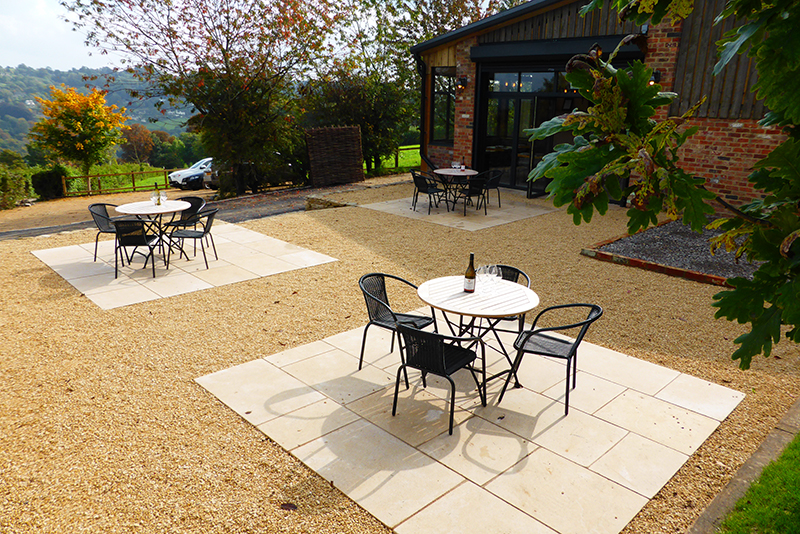Jeremy Mount, winemaker at Woodchester Valley, Gloucestershire, talks to Vineyard about the enormous potential for home-grown still wines.
How did you get into the English wine industry?
It started from the culmination of being raised in a fruit farming family near Canterbury and working for several years in France, spurred on by living in South Africa. After completing an oenology degree at Plumpton College I worked at quite a lot of wineries globally such as Stags Leap in Napa, Rupert and Rothschild in Franschhoek, I lived in Chablis working in a winery nearby in Burgundy, as well as Franconia and Malta. I’ve worked at several UK vineyards, but the one of note would be three harvests at Bluebell Vineyards. I worked at Matua, South Island, New Zealand for two and a half years as senior lab technician before returning to the UK and joining Woodchester Valley in 2016.
Name one interesting fact about Woodchester that retailers can quickly share with consumers to help the brand stick in their mind.
The urn on our labels is taken from the centre of the local Orpheus Roman pavement in Woodchester, which as an intact example is the second largest in Europe. Stonehouse is recorded in the Doomsday book as having vineyards.
What have you learnt from working in other wine regions?
I primarily learnt the extensive variety of methods of production and various details that can be very different. The same variety, for instance, can be processed very differently from one region to another. The most relevant experience to winemaking here in England would be Pinot noir and Bacchus production in Germany and looking ahead Chardonnay from time spent in Chablis. Also, I never thought the experience gained with Sauvignon blanc in New Zealand would of so much use over here.
Where do you think the UK wine market will head over the next five to ten years?
Sparkling wines have gained some excellent recognition globally, cementing the UK as one of the most important new wine producing countries. This I believe has naturally paved the way for still wines to start making an impact. The lesser known varieties maybe not, but in the future if there is an increase of years similar to 2018 then definitely Chardonnay and Pinot noir still wines will improve in quality to the levels of well known wine regions of the world. This will increase the export market but also the awareness nationally encouraging more people to choose English and Welsh wine over others.
Please tell us about your terroir…
We have three planted vineyard areas within 3-miles of the winery at Woodchester, with a total of 55-acres under vine. Located in the Cotswolds, just north of Bristol, the vines are all on steep slopes, in fact, we have some of the steepest vineyard plots I know of in the UK. They are all predominantly south facing and unlike the championing of chalk soils, we have limestone bedrock under a thin layer of clay loam. At the Woodchester site in places the limestone is at the surface littered with fossils, so very free draining. The Stonehouse site has about 40cm of clay above the limestone with an area that changes to more sand/silt/clay. Having the three sites slightly staggered the ripening rate and adds variation giving us a wider spectrum of varietal characteristics.
How would you describe the ethos of the estate?
We are single estate with a focus on producing the best possible quality not quantity. We have a dedicated and hardworking small team with a sole focus to produce the finest quality wines which are authentic to and reflect their Cotswold origins, and our limestone. We invite people to visit and stay to experience what we do and what we produce in an atmosphere of warm hospitality and professionalism. The big picture being to make a name for top quality wines from the Cotswolds.
What modern equipment could you not live without in the winery?
I was involved with the installation of the winery so fortunately I selected a lot of the equipment both in the winery and lab. The inert environment function of the press enables us to press the juice in a hyper reductive environment. It definitely helps to protect the flavour and aroma pre-cursors of the varieties for the still wines, particularly in the second half of the press cycle. I don’t use this for all the still varieties and definitely not for sparkling base wines but it’s a very useful function. In the lab, I’d like to say RX Altona spectrophotometer, Hanna edge, DMA 35 or the aspiration kit, I consider them all essential but the Clifton cold stabilisation bath would probably be at the top of the list.
What do you think is the biggest issue facing the UK wine industry at the moment?
The biggest issue is probably the industry not knowing its limit. I think that quality is a major worry. I believe as the volumes of production increase we need to maintain the quality. The variable climatic conditions mean that for still wines especially, consistency of quality is difficult. For example, last year’s harvest wasn’t the best so we decided not to make any red wines.
Do you have a market in mind when you are crafting your products?
We sell a lot of wine locally. The Cotswolds is quite a high tourist destination and residents are keen to buy local produce. As production increases and distribution expands nationally, elements of pleasing the customer are higher on the agenda. An example of this is rosé which can be tricky, balancing the colour over flavour and aroma. I try to just make wine that I think brings out the best varietal characteristics.
Do producers need to offer more than just wine to be sustainable?
In the majority of cases they definitely do. We offer quite a lot here, both from our shop on the A46 and the tasting room at the winery. Through the winter, we do six tours a week and in the summer this goes up to 11, which have been very well received. We host a variety of other tasting and food events, which bring people to the vineyard that may have already been on a tour. We also have high quality accommodation at both Woodchester and Stonehouse with a variety of sizes available from one bed vineyard barn apartments to a six bedroom house. This enables people to have more of an experience here.
What are your hopes for this year’s vintage?
The 2019 vintage was a reminder that we will not consistently have good years. For us we didn’t have the best flowering on some varieties, Bacchus in particular, but fortunately this resulted in low yields that ripened very nicely and quality was very good. Every year we want a better year than the last. We hope for no late frosts, warm conditions over flowering, a bit of rain in the summer followed by clear blue skies from September to November. In reality this doesn’t always occur.
What is your approach to winemaking?
I only add what is necessary. I like to make wines that are clean, fresh and stable. Wine that people will enjoy and drink plenty of, without having to think too much about. I only add what is essential for wine stability, I filter and I don’t want any harsh tannins. They are all vegan friendly, for the simple reason that the products that I think perform best happen not to be derived from animals.
How can winemakers ensure they are staying ahead of trends to better connect with consumers?
Our label design and type of bottle is always something that is evolving and of course the sustainability of our production is very important to us. As far as the wines produced, an example for us would be our entry level sparkling wine ‘Cotswold Classic’. It is a blend of Seyval blanc and Pinot blanc which only has 15-18 months aging on lees. The wine is not a Champagne style, it’s more approachable and fruit forward, which has proven to be very popular. Retailing at £19.95 customers seem to buy a bottle then return for a few cases.
What is the best award you have received for the wines?
We are fortunate to have done well. I think the highest accolade, and the most surprising, would be international double gold for the Sauvignon Blanc. It got gold 96 points in IWSC and was one of only 10 golds awarded in the Drink’s Business Global Sauvignon Blanc Masters. Bacchus, Culver Hill and Pinot Rosé have also received golds. Having been involved in a lot of judging myself I know there can sometimes be an element of luck as to when your wines are tasted.
What’s on the cards for the future?
We have all our standard 2019 releases coming out this year but of the new still wines of note we have Pinot Noir 2018 which shall be released later in the year and Atcombe White 2019, which is a Sauvignon blanc Ortega blend. We are possibly going to release a small amount of Blanc de Blanc 2016 at the end of the year too.
Finish this sentence: In ten years’ time….
In ten years’ time, I’d like to try the Pinot Noir 2018 and be pleased with how it’s developed.

